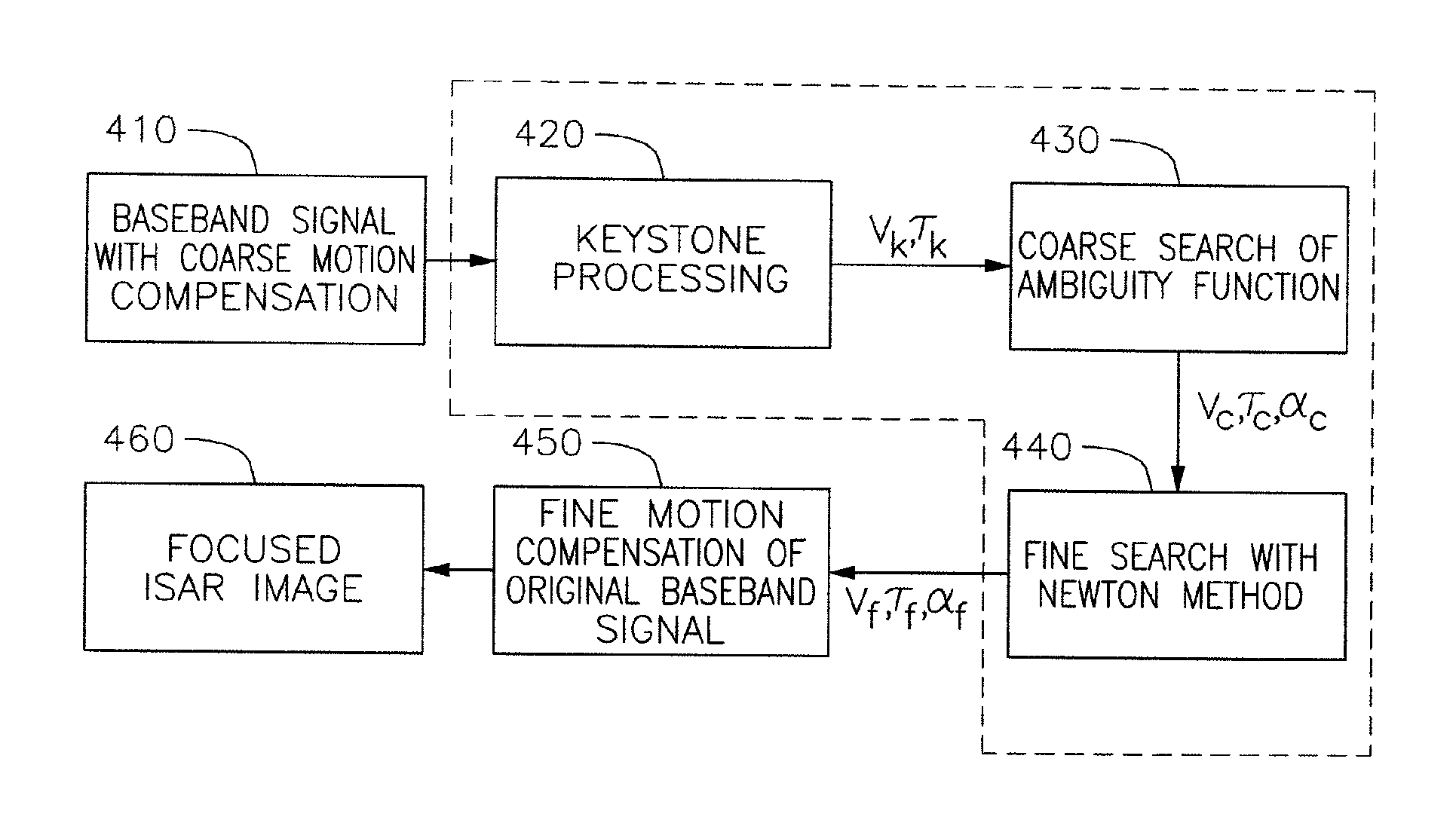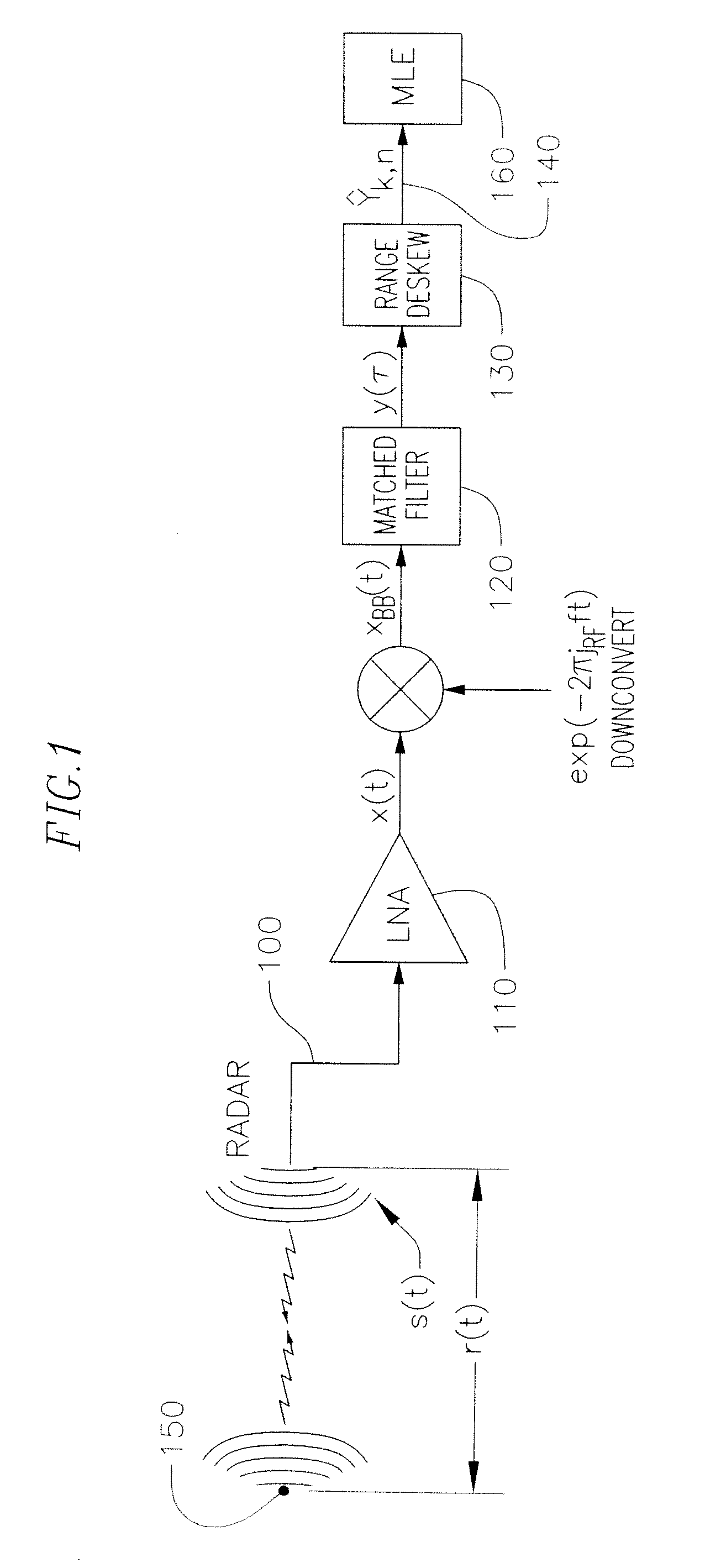Fast implementation of a maximum likelihood algorithm for the estimation of target motion parameters
a maximum likelihood algorithm and target motion technology, applied in the direction of instruments, measurement devices, using reradiation, etc., can solve the problems of improving the estimation of target motion parameters, requiring an exceedingly large number of computations, and requiring limited success in searching for the global maximum of the 3d function
- Summary
- Abstract
- Description
- Claims
- Application Information
AI Technical Summary
Benefits of technology
Problems solved by technology
Method used
Image
Examples
Embodiment Construction
[0026]In the following detailed description, only certain exemplary embodiments of the present invention are shown and described, by way of illustration. As those skilled in the art would recognize, the invention may be embodied in many different forms and should not be construed as being limited to the embodiments set forth herein. Like reference numerals designate like elements throughout the specification.
[0027]In an exemplary embodiment of the invention, a pulse doppler radar transmits a signal and receives a return signal reflected from a scatterer, or a target. The phase of the return signal (the “real phase”) is correlated with the phase of a model signal (e.g., a signal generated by a matched filter), and due to doppler shifts in the return signal, the result of the correlation results in an ambiguity function Ψ of three dimensions, representing target motion parameters (i.e., range, range rate, and acceleration). The maximum value of the ambiguity function Ψ is then calcula...
PUM
 Login to View More
Login to View More Abstract
Description
Claims
Application Information
 Login to View More
Login to View More - R&D
- Intellectual Property
- Life Sciences
- Materials
- Tech Scout
- Unparalleled Data Quality
- Higher Quality Content
- 60% Fewer Hallucinations
Browse by: Latest US Patents, China's latest patents, Technical Efficacy Thesaurus, Application Domain, Technology Topic, Popular Technical Reports.
© 2025 PatSnap. All rights reserved.Legal|Privacy policy|Modern Slavery Act Transparency Statement|Sitemap|About US| Contact US: help@patsnap.com



